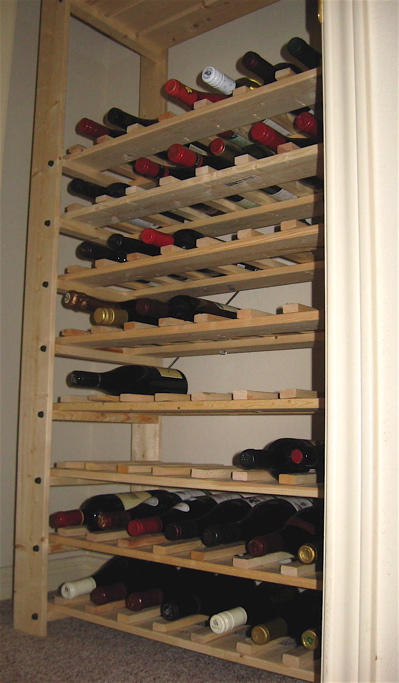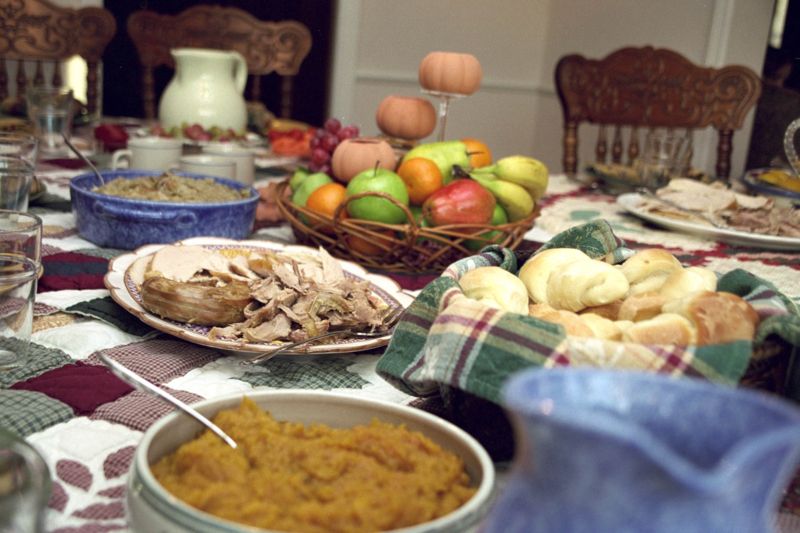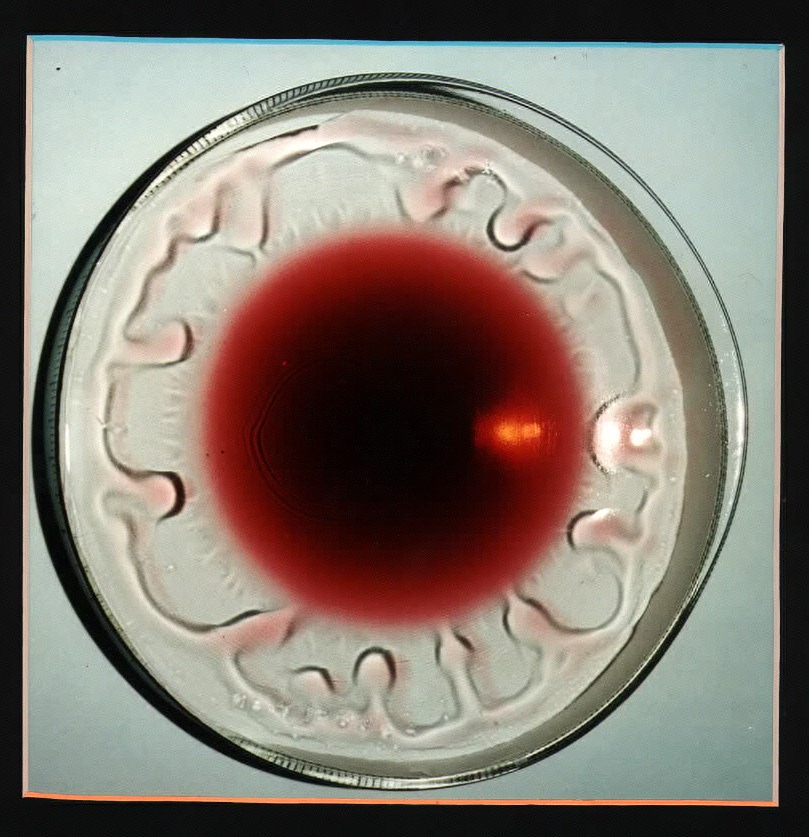 The last note for a while about my burgeoning cellar, I promise: when shopping at Ikea recently for kitchen cabinets (we’re remodeling our kitchen at the end of the month, a fact which fills me with unreasoning dread), my beloved and I stumbled across a wine storage system which would store 80+ bottles… for only $100!
The last note for a while about my burgeoning cellar, I promise: when shopping at Ikea recently for kitchen cabinets (we’re remodeling our kitchen at the end of the month, a fact which fills me with unreasoning dread), my beloved and I stumbled across a wine storage system which would store 80+ bottles… for only $100!
While Tom could very easily make me a wine rack, we’re embroiled in this remodel currently, and he’s also working on building us our own tear-drop trailer. So we figured to take the easy way out, and he put them together for me yesterday, an unusually cold rainy Saturday which would have kept him in doors anyway.
We located the new rack in the hall closet. I don’t know where we’re going to put all the camping gear that lived in there before – it’s hunched in the corner of the guest room, whimpering and bewildered.
For those of you that dream of someday owning your very own wine collection, bottles gently aging toward perfection, there are a few things you need to consider in the placement of your treasure trove. Firstly, light: wine hates it, and you don’t want your wine to learn to be a hater. Choose a wine storage location away from light.
Secondly, temperature: we call wine collections “cellars” because traditionally wine was kept in the basement, because there is little to no temperature variation underground. Sure, if you spring for a refrigerator to keep your wine in, you can store it at 55 degrees Fahrenheit, just like it would be kept in a cellar. Or if you actually have a basement (something largely uncommon in my neighborhood of houses built on solid limestone, and not so much with the tornados), you can keep your juice there with much sense of tradition. But simply giving your wine somewhere to sleep that will have a constant temperature (in my house, this means in the center of the home, close to the floor) is completely acceptable. Especially if you’ve got the dark part taken care of.
Thirdly, inclination: with the advent of the Stelvin closure, this is becoming less vital, but if you are storing bottles closed with corks, you need them to stay wet. Horses may sleep standing up, but wine doesn’t like it. Treat your wine better than the airlines treat all of us, and let it lay down to rest. Your corks will stay moist and pull-able, and everyone will live happily ever after.


